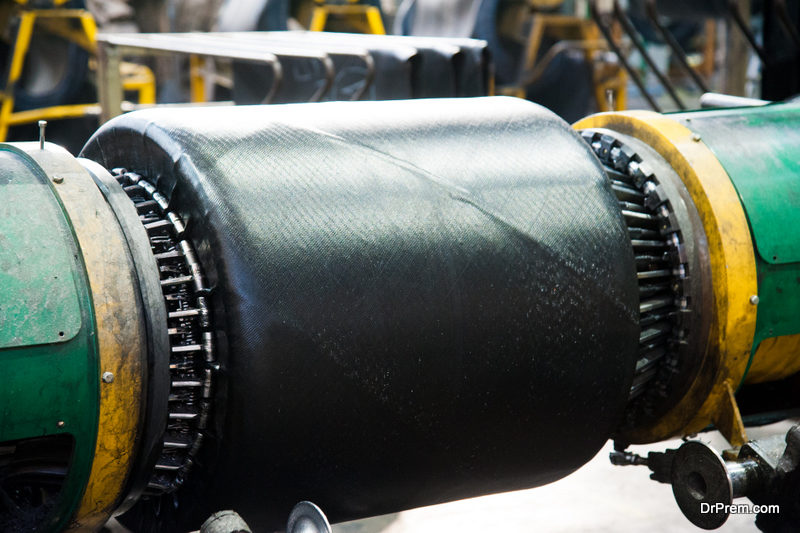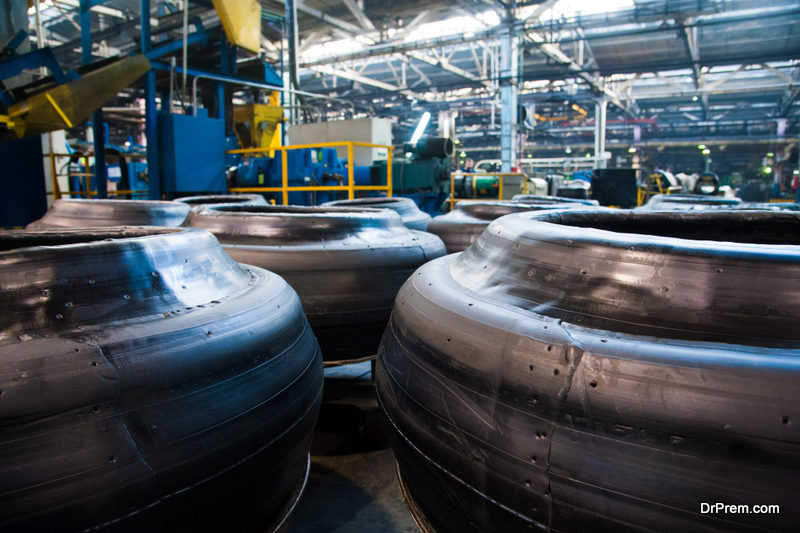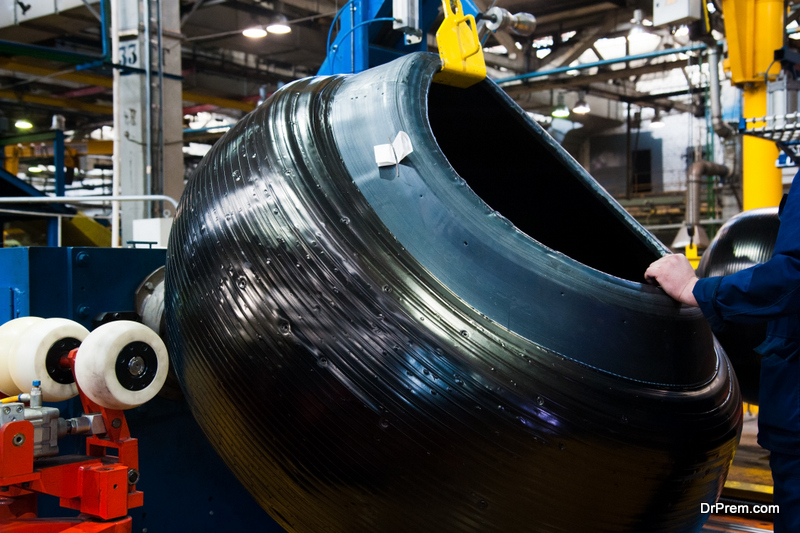Manufacturing tires can be a very lucrative business. Top companies in the industry can make over $22 billion annually, and for good reason. Cars are manufactured all the time, along with many kinds of bikes, commercial vehicles, and so on. An estimated 2.5 billion tires are manufactured each year.
Everybody needs good tires for their vehicles, and the demand there is unlikely to decrease any time soon. Therefore, the tires keep being made, and the rubber continues to get worn out and needs to be replaced.
But where does the rubber used for tires come from? Growing mainly in Southeast Asia, Hevea Brasiliensis (otherwise known as rubber trees) produce a milky liquid substance. When mixed with latex and other select chemicals, this rubber tree milk then turns into what we know as raw rubber. This is what is used in producing tires.
The Environmental Pitfalls of Tire Production
 There’s a big issue with tire production, and it’s actually not that the rubber tree is in danger. The biggest environmental problem associated with tire production (and anything else involving raw rubber) is the fact that many forests and wildlife habitats are being destroyed needlessly every year to plant or use the Hevea Brasiliensis. Not all raw rubber producers are ethical or using sustainable practices. Unfortunately, that can harm the environment.
There’s a big issue with tire production, and it’s actually not that the rubber tree is in danger. The biggest environmental problem associated with tire production (and anything else involving raw rubber) is the fact that many forests and wildlife habitats are being destroyed needlessly every year to plant or use the Hevea Brasiliensis. Not all raw rubber producers are ethical or using sustainable practices. Unfortunately, that can harm the environment.
You may be surprised to hear that many tire companies do not track the rubber they are receiving. In fact, the rubber production and distribution industry, which is powered mainly by tire manufacturers, is a hot mess of disorganization and environmentally damaging habits.
From illegal work practices to deforestation, many rubber suppliers are choosing to wreak havoc on Southeast Asia and other places where rubber trees grow. After all, they haven’t been held accountable for their production practices. However, this is beginning to change.
A Change in Awareness
Several top tire manufacturers and organizations concerned with wildlife affected by deforestation have begun to join forces in an effort to better control their own impact on the environment. In 2018, they set in motion the organizing of the Global Platform for Sustainable Natural Rubber.
This initiative is still early-on in its development but aims to increase awareness and action towards creating sustainable and environmentally-safe options of rubber creation. Tire Industry Project (or TIP) is spearheading the undertaking of the Global Platform for Sustainable Natural Rubber for the first couple of years, slowly building this platform until it helps guide sustainable rubber production and consequently tire manufacturing.
Furthermore, many businesses and individuals are raising awareness about the harmful effects of deforestation and how it can be caused by rubber producers. While efforts are being made to check the practices of who and where tire companies get their rubber from, many companies are beginning to offer more environmentally-friendly tire options.
How Manufacturers are Becoming Eco-Friendly
 Many tire manufacturers are beginning to make eco-friendly options for those who would like to help reduce their effect on the environment. Several, such as Giti Tire Group, have been reaching out to the areas which they get their rubber from, beginning reforestation initiatives which are positively impacting the environment in big ways.
Many tire manufacturers are beginning to make eco-friendly options for those who would like to help reduce their effect on the environment. Several, such as Giti Tire Group, have been reaching out to the areas which they get their rubber from, beginning reforestation initiatives which are positively impacting the environment in big ways.
A couple of tire manufacturers are also looking at producing rubber from a desert plant called guayule, which could potentially create rubber sufficient and safe to use in tire production. Since this plant is easy to grow, requires little water, and could replace the rubber tree, studies and experiments are being conducted to further reduce the impact of the rubber tree and forest destruction. If these studies are successful, we may have some new, versatile materials available for use in many areas of production to replace rubber.
Another option being discussed is reforestation and the responsible production of rubber. Instead of using the forests, leaving them damaged and moving on to the most easily attained rubber tree milk, taking time to grow rubber trees, nurturing these plants and sourcing the rubber responsibly is becoming more regularly expected.
This is not difficult, as rubber trees are relatively easy to grow. In fact, they have been a popular houseplant for many years, although those ones don’t grow quite as tall as their nearly 100-foot brothers in Southeast Asia.
With all the advancements in technology, tire manufacturers hope to produce rubber from entirely safe and sustainable sources in the near future. What once was thought of as an unachievable goal has become well within reach.
Where Old Tires Go
We’ve all seen tires sitting for long periods of time aging but never leaving. Is it possible for biodegradable tires to be arriving in the future? For some manufacturers, that’s the plan. However, the jury is still out on whether that is a viable option or not, and in the meantime, there are things we can do to help prevent waste and buildup of tires.
From making tire swings to using them as gardening beds, or recycling them properly, we should all do our part to keep old tires from building up. Furthermore, we all can take an active interest in the production of rubber, as it will take many people to make this a responsible practice. Helping to raise awareness for the environmental impact tires and rubber have is a small and doable task all of us can undertake.
Moving Forward
 With attention being drawn to tracking rubber production to make sure it is responsibly sourced, and manufacturers becoming actively engaged in efforts to protect the environment, we can look forward to a cleaner future and less impact on the plant. Giti Tire Company, as well as several others, have dedicated themselves to manufacturing high-quality tires in a way that is respectful to the forests and wildlife of Southeast Asia.
With attention being drawn to tracking rubber production to make sure it is responsibly sourced, and manufacturers becoming actively engaged in efforts to protect the environment, we can look forward to a cleaner future and less impact on the plant. Giti Tire Company, as well as several others, have dedicated themselves to manufacturing high-quality tires in a way that is respectful to the forests and wildlife of Southeast Asia.
In the future, we can expect to see technological advancements and research being completed to better the rubber industry, and we can expect high-quality without sacrificing the environment. At the rate that technology is progressing, the ultimate goal of 100% sustainable, biodegradable rubber is a real possibility.
Article Submitted By Community Writer




